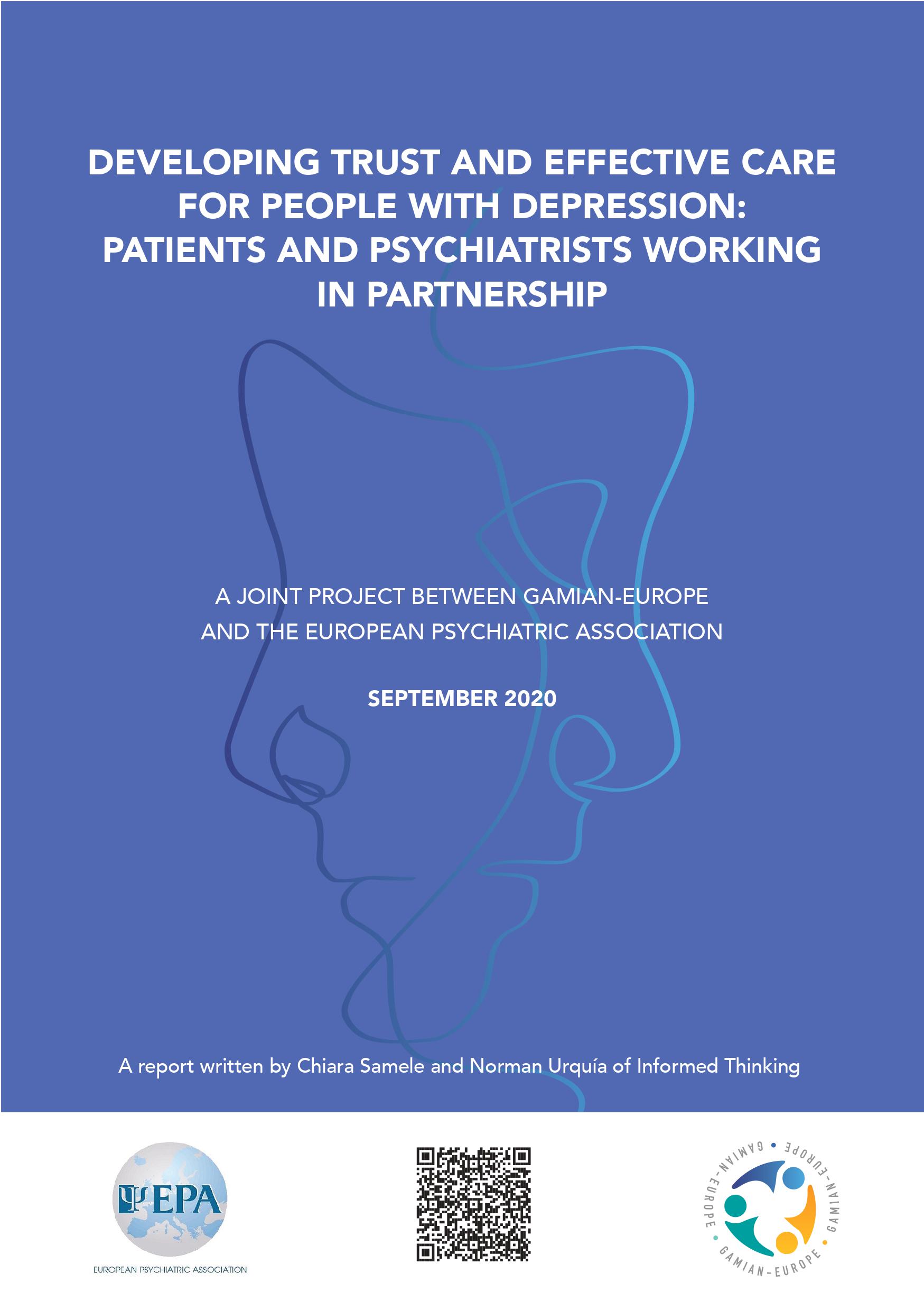The importance of the therapeutic relationship between a patient and their clinician cannot be underestimated. Previous research has shown the positive effects of good therapeutic relationships and improved health outcomes. However, there has been relatively little systematic exploration of the experiences of patients and clinicians together, their interactions and therapeutic relationship to shed light on how these relationships can be improved.
The project represents an important joint partnership between GAMIAN-Europe and the European Psychiatric Association (EPA) and a way to strengthen this through joint working to improve the therapeutic relationship between patients and psychiatrists. The aim was to explore the patient-clinician relationship in a pilot project from the perspective of both the patient and their psychiatrist as individuals; and to explore their ‘paired’ experience in relation to developing trust, shared decision making regarding treatment, and positive and negative experiences of their meetings. The main objective was to identify
optimal interactions between psychiatrists and patients.
The project was an exploratory pilot using a practical approach to recruiting paired psychiatrists and patients. Semi-structured
questionnaires were developed for collecting qualitative data from patients and psychiatrists. Eighteen patient and psychiatrist
pairs (a total of 36 individuals) were recruited from across three countries: France, Italy and Romania.
Patients and psychiatrists highlighted the elements they considered important for a good therapeutic relationship. These included a relationship in which both parties listened to each other and from the patients’ perspective where a psychiatrist was respectful, empathetic and non-judgemental. Psychiatrists considered it important to explain information clearly to patients and to develop relationships over time, especially if they were difficult to begin with due to hospitalisation.
Factors that impeded a positive therapeutic relationship, from the psychiatrists’ perspective included, patients not being open to discussion and the advice they gave and not adhering to treatment.
Two main approaches to treatment decision-making were identified – A) psychiatrist alone deciding on treatment and informing the patient and B) the psychiatrist proposing treatment and involving the patient in the decision. Most patients and their psychiatrists shared the decisions made about treatment and to some extent mutually agreed what that would be.
The patients and psychiatrists included in the project had well established relationships and knew each other well. Our findings show interesting insights into what the patient and their psychiatrist consider important in building a trusting and therapeutic relationship; both being crucial for ensuring effective practice, treatment and care.
